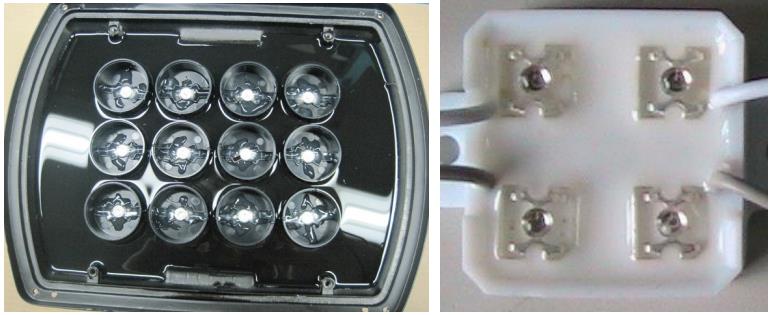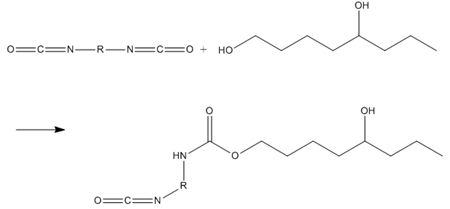Hollow glass beads - low Dk, low shrinkage, high heat insulation, common problems and solutions in electronic adhesives
Hollow glass sphere, application explanation in electronic adhesives~
Kelly Chemical offers various specifications of HGM materials, effectively enhancing the added value of products.
With the advancement of technology, materials are subjected to higher demands. For instance, there's a growing need for lighter shoes, more fuel-efficient cars, environmentally friendly plastic products, superior processing performance, and higher product quality. These demands are the driving force behind material innovation. As a novel functional filler, HGM is gradually gaining attention in the materials industry, bringing endless possibilities for innovation.
First,Classification and Application Range of Electronic Potting Compounds:
Electronic potting compounds are used for bonding, sealing, potting, and coating protection of electronic components. They exhibit excellent fluidity before curing and provide functions such as waterproofing, moisture resistance, dust prevention, insulation, heat conduction, confidentiality, corrosion resistance, temperature resistance, and shock resistance after curing. There are various types of electronic potting compounds, primarily classified into three main types based on material type: organic silicone potting compounds, epoxy potting compounds, and polyurethane potting compounds. Each of these three material types can further be subdivided into hundreds of different products.
1.Organic Encapsulant Adhesive
Organic silicone encapsulant adhesive is an electronic encapsulant adhesive that uses silicone rubber as the main material, including single-component organic silicone encapsulant adhesive and two-component organic silicone encapsulant adhesive. Main application areas: suitable for encapsulating various electronic devices operating in harsh environments and high-end precision/sensitive electronic devices. Such as LEDs, displays, photovoltaic materials, diodes, semiconductor devices, automotive stabilizers (HIV), automotive computers (ECU), etc., mainly for insulation, moisture-proof, dust-proof, and shock absorption.

2.Epoxy Encapsulant Adhesive
Epoxy encapsulant adhesive is generally composed of bisphenol A epoxy resin, curing agent (amines or anhydrides), reinforcing agents, fillers, etc. It is commonly used for encapsulating non-precision electronic devices such as LEDs, transformers, regulators, industrial electronics, relays, controllers, power modules, etc.

3.Polyurethane Encapsulant Adhesive
Polyurethane encapsulant adhesive, also known as PU encapsulant adhesive, is mainly composed of diisocyanate and polyether polyol, crosslinked and cured in the presence of a catalyst, with adjustable hardness. Main application areas: generally used for encapsulating electronic components with low heat generation. Such as transformers, anti-flow rings, converters, capacitors, coils, sensors, potentiometers, linear motors, fixed rotors, circuit boards, LEDs, pumps, etc.
Second,The application status of hollow glass spheres in electronic encapsulant adhesives
The application of Hollow Glass Spheres (HGS) in electronic encapsulant adhesives is widespread, playing the following roles:
1)Lightweighting: HGS, being hollow, has a true density of (0.12~0.70g/cm3). As a lightweight filler, its addition to electronic encapsulant adhesives significantly reduces their density.
2)Thermal conductivity reduction: The interior of HGS consists of a thin gas, with a thermal conductivity coefficient ranging between 0.038 to 0.060 (W/m.K). Incorporating HGS into electronic encapsulant adhesives effectively lowers their thermal conductivity, enhancing their insulation and soundproofing capabilities.
3)Low dielectric: The interior of HGS contains a thin gas with a dielectric constant of 1.2~1.8. Adding HGS to electronic encapsulant adhesives effectively reduces their dielectric constant, facilitating increased signal transmission rates, reduced signal delays, and minimized signal loss in smart terminals.
4)Temperature resistance: HGS is formed from borosilicate glass at high temperatures (>1500℃), possessing high chemical stability. As a filler, it does not react with substrates or other materials, thereby enhancing the weather resistance of electronic encapsulant adhesives and improving corrosion resistance.
5)High fluidity: The spherical structure of HGS resembles ball bearings, providing lubrication within electronic encapsulant adhesives. This prevents irregularly shaped fillers from frictionally affecting each other's flow, thereby reducing the viscosity of electronic encapsulant adhesives and increasing their fluidity.
Third,Precautions when using hollow glass spheres in electronic encapsulant adhesives
When applying hollow glass spheres in electronic encapsulant adhesives, certain precautions must be taken to avoid potential issues. Here are specific solutions for such problems:
1.Organic Silicone Encapsulant Adhesive
Here, we mainly discuss the addition-type organic silicone encapsulant adhesive. The curing principle of addition-type organic silicone encapsulant adhesive involves using polymers based on vinyl-terminated silicone oil or high-vinyl silicone oil as the base, with hydrogen-containing silicone oil as the crosslinking agent. Under the action of platinum catalysts, a reaction occurs at room temperature or under heating conditions without generating small molecules. When using hollow glass spheres in addition-type organic silicone encapsulant adhesives, attention should be paid to the following two points:
1) Non-curing of addition-type organic silicone encapsulant adhesive
Non-curing of addition-type organic silicone encapsulant adhesive is due to the interaction between platinum catalysts and certain compounds, causing the platinum catalysts to lose hydrogenation capability, resulting in non-curing, commonly referred to as "platinum poisoning." Substances that can cause "platinum poisoning" include organic compounds containing N, P, S, etc., heavy metal ion compounds such as Sn, Pb, Hg, Bi, As, and organic compounds containing multiple polymers such as vinyl groups.
.png)
Hollow glass spheres are formed from borosilicate glass through high-temperature firing, with a surface pH of 9-10, which can adsorb some metallic elements and metal oxides on the surface. When untreated hollow glass spheres are used in addition-type organic silicone encapsulant adhesives, the metallic elements and metal oxides adsorbed on the surface may cause "platinum poisoning." Therefore, if non-curing occurs after adding hollow glass spheres to addition-type organic silicone encapsulant adhesives, consideration should be given to whether the hollow glass spheres have been acid-washed to remove iron. Hollow glass spheres need to be acid-washed and surface-modified before they can be used in addition-type organic silicone encapsulant adhesives.
2) Deterioration of flame retardancy performance of addition-type organic silicone encapsulant adhesive
Hollow glass spheres are inorganic metal oxides with a melting point above 1450 degrees, which do not decompose at high temperatures and are not easily deformed. As polymer filler materials, they can improve the flame retardancy characteristics of polymers.
The addition of hollow glass spheres to addition-type organic silicone encapsulant adhesives may appear to deteriorate flame retardancy performance. This is because adhesive manufacturers typically use weight ratios to measure hollow glass spheres when designing formulations. The true density of hollow glass spheres (0.12~0.70g/cm3) is extremely low. If hollow glass spheres with the same weight ratio are used to replace fillers such as calcium carbonate, the volume fraction of hollow glass spheres in addition-type organic silicone encapsulant adhesives will be significant. This results in a low volume fraction of flame retardants in addition-type organic silicone encapsulant adhesives. Therefore, attention should be paid to the volume ratio occupied by hollow glass spheres in addition-type organic silicone encapsulant adhesives, which should not exceed the volume ratio of fillers in the original formulation system.
2.Polyurethane Encapsulant Adhesive
The curing principle of polyurethane encapsulant adhesive involves Component A, which consists of polyols such as polyesters, polyethers, and polydienes, and Component B, which consists of diisocyanates. This system is polymerized step by step using diols or diamines as chain extenders.

When applying hollow glass spheres in polyurethane encapsulant adhesives, two points need to be noted:
1)Increased viscosity of Component B of polyurethane encapsulant adhesive
Isocyanates readily react with compounds containing active hydrogen atoms such as amines, water, alcohols, acids, and bases. The surface pH of hollow glass spheres is 9-10, and the alkaline substances on the surface react with isocyanates, causing an increase in the viscosity of Component B of polyurethane encapsulant adhesive. Therefore, if such a situation occurs, consideration should be given to whether the added spheres have undergone acid washing modification. Hollow glass spheres need to undergo acid washing surface modification before they can be used in Component B of polyurethane encapsulant adhesive.
2)Surface foaming after curing of polyurethane encapsulant adhesive
Reaction of isocyanates with hydroxyl groups: RNCO + R'OH → RNHCOOR', this reaction is an addition reaction, with no small molecule release, thus not causing surface foaming after curing of polyurethane encapsulant adhesive.
Reaction of isocyanates with water: 2RNCO + H2O → RNHCONHR + CO2↑, this reaction is a condensation reaction, during curing, carbon dioxide gas is released, and the released carbon dioxide gas causes surface foaming after curing of polyurethane encapsulant adhesive. If surface foaming occurs after curing when polyurethane encapsulant adhesive is added with hollow glass spheres, the moisture content of hollow glass spheres or other raw materials should be considered. A moisture content below 5 ppm can avoid this problem.
#HollowGlassSpheres #EnergySavingCarbonReduction #Lightweighting #ThermalInsulation #LowDielectricConstant #ReducedThermalConductivity
CONTACT US
Kelly Chemical Corporation
Electronics
TEL:(02)2762-1985 ext 11200
Online Message
Leave your contact information,
and we will get in touch with you soon.
Email Consultation
After receiving your email,
we will process it as soon as possible.send Email